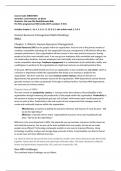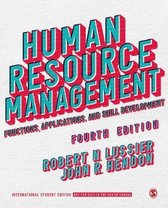Samenvatting
Human Resource Management B&M readings summary
- Instelling
- Rijksuniversiteit Groningen (RuG)
Summary of the mandatory readings of the book and articles for the Human Resource Management B&M course for FEB Bedrijfskunde/Business administration 2nd year & FEB Pre-Msc programs!
[Meer zien]





